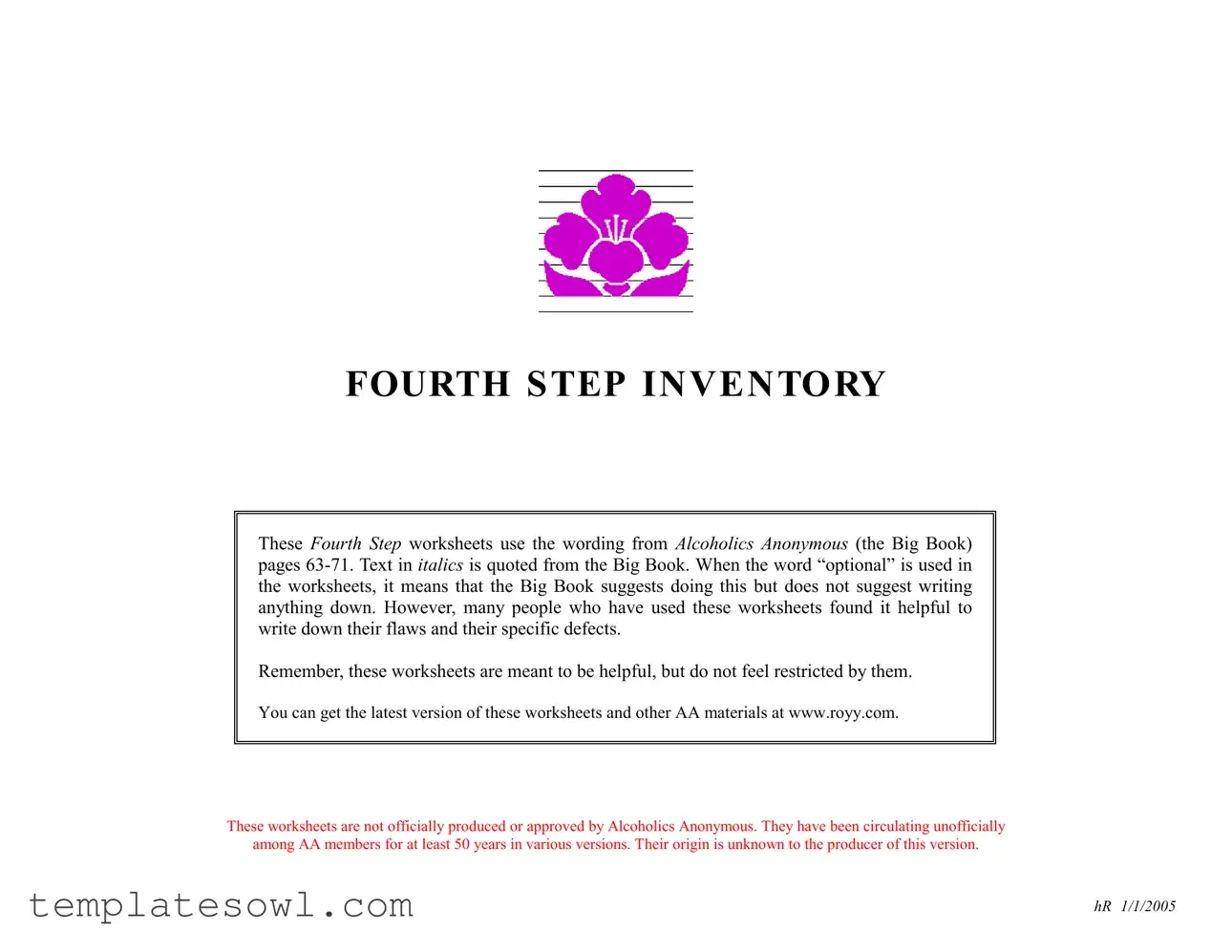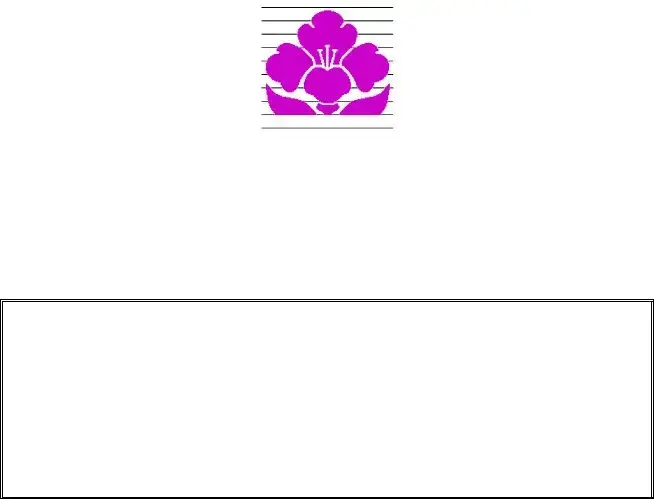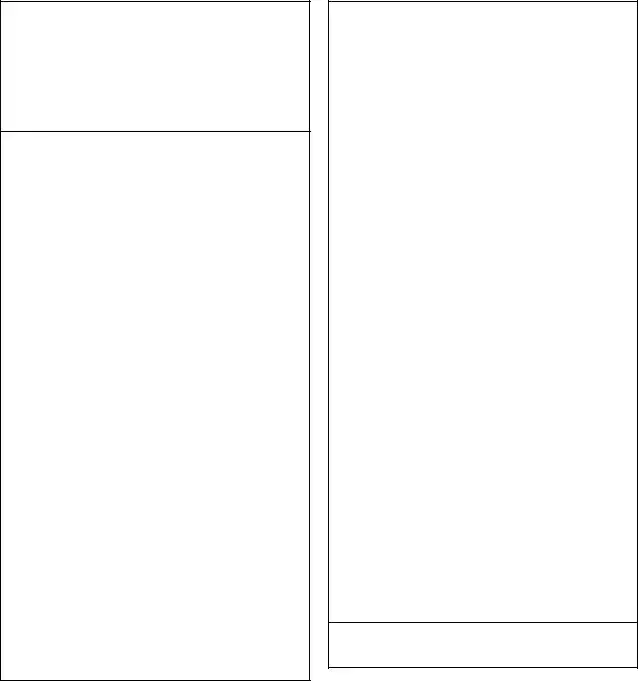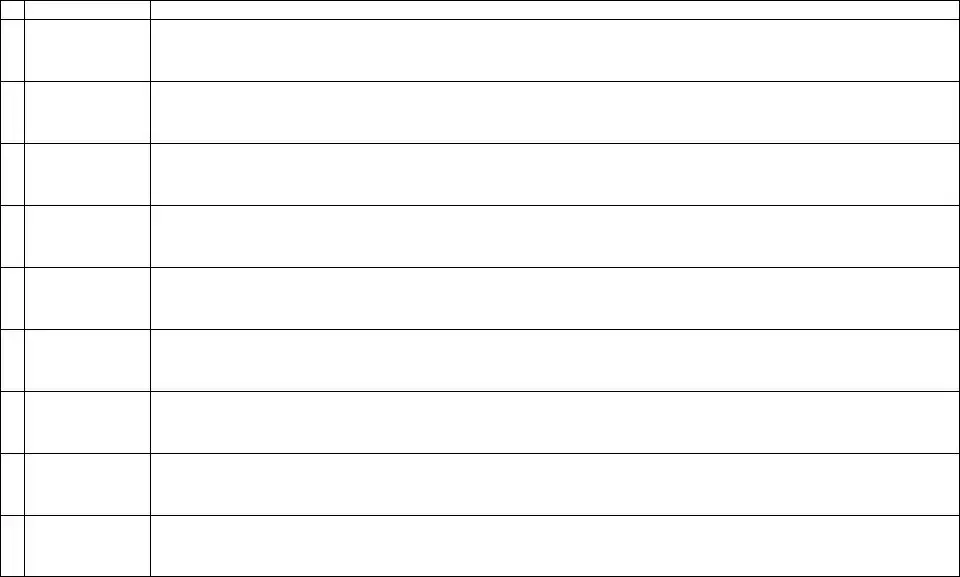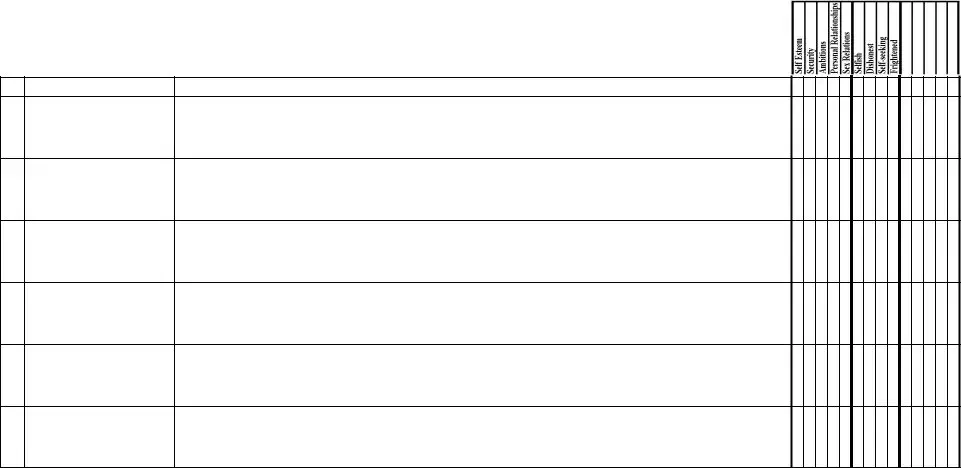What is the purpose of the Fourth Step Inventory form?
The Fourth Step Inventory form is designed to help individuals take stock of their character traits, both positive and negative. Its primary aim is to encourage honest self-reflection, enabling users to identify their strengths and flaws. This process is essential for personal growth and recovery within the framework of Alcoholics Anonymous. By completing this inventory, individuals begin to understand their values and how they align with their behavior.
How should I prepare for filling out the Fourth Step Inventory?
Before starting the inventory, it is vital to read pages 63-71 of the Big Book of Alcoholics Anonymous, along with the Fourth Step section in the Twelve Steps and Twelve Traditions. This preparatory reading provides context and guidance for the inventory process. Additionally, individuals are encouraged to approach this exercise with self-compassion and fairness, aiming for honesty without self-criticism.
What types of traits are included in the inventory?
The inventory consists of a list of character defects alongside their opposite assets. It is important to consider both when reflecting on oneself. While the list serves as a guideline, individuals should feel free to add other qualities that resonate with their personal experiences. This comprehensive approach allows for a deeper understanding of one’s character.
Why is it suggested to list more assets than flaws?
Listing at least twice as many positive traits as negative ones helps prevent self-neglect and promotes a balanced self-view. Focusing excessively on flaws can lead to feelings of inadequacy. The aim is to foster a healthy perspective that recognizes both strengths and weaknesses, encouraging self-acceptance and growth.
Can I include past behaviors in my inventory?
The Fourth Step Inventory is primarily about a person's current character and behavior rather than past drinking or drug use. While it is essential to acknowledge issues that may stem from past actions, the focus should remain on present-day attributes and how those reflect one's values. This approach helps individuals to avoid using substance use as a blanket excuse for all negative behaviors.
What should I do after completing the Fourth Step Inventory?
Upon completing the inventory, the next step involves discussing identified flaws with a trusted person, as outlined in the Review of Flaws section. This conversation allows for further examination and understanding of those defects, and it aids in planning how to address them in the upcoming Steps Six, Seven, and Ten. Engaging in this dialogue can provide additional insights and support for personal growth.
